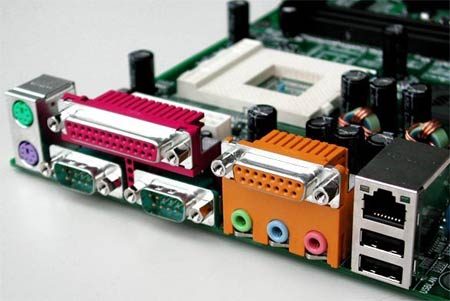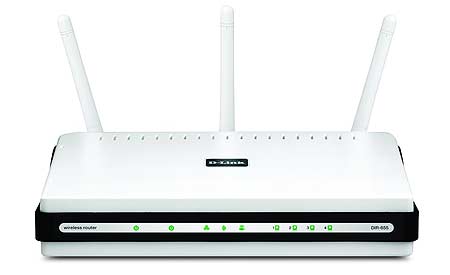Gigabit Ethernet: Dude, Where's My Bandwidth?
What Makes A Gigabit Network? Cards, Cables, And Hubs
A gigabit network requires that every part of the network must be gigabit-capable, while it will run at the speed of the lowest common denominator. For example, if you’re running a network with gigabit network cards and gigabit-compatible cables, but your hub/switch is only capable of 100 megabit transfers, then your network will run at 100 megabit speeds.
The first prerequisite is the network controller. You'll probably want every computer on the network to have a gigabit-capable network card or motherboard-down solution. This is probably one of the easiest requirements to meet, as most motherboards manufactured during the past couple of years have gigabit networking built right in.
The second prerequisite is that the network cable must also be gigabit-compatible. There is a common misconception out there that gigabit networks require Category 5e class cable, but actually, even the older Cat 5 cable is gigabit-capable. Having said that, Cat 5e cable has better electromagnetic interference characteristics and is therefore a better choice for gigabit networking, especially when using longer cable lengths. Frankly, Cat 5e cable is probably the cheapest cable you’ll find available today, as the older Cat 5 is obsolete. The newer and more expensive Cat 6 cable is also more than certified for gigabit applications. We'll be testing Cat 5e versus Cat 6 cable performance later in the article, just to be sure.
The third, and probably the most expensive component in a gigabit network, is a gigabit-capable hub. Of course, a switch or router would be preferable, since a hub is a somewhat "dumb" device that shares all of the network traffic bandwidth at every one of its ports, which can cause a lot of data collisions and, therefore, slower network speeds. A gigabit switch should be the minimum requirement for someone interested in network performance, as it directs network packets to the proper port, resulting in increased speed compared to a hub. A router is also preferable over a hub as it is capable of switching, in addition to connecting your LAN to the Internet. Most folks running a LAN at home will probably realize the benefits of a router anyway, so a gigabit router is an attractive option.
Get Tom's Hardware's best news and in-depth reviews, straight to your inbox.
Current page: What Makes A Gigabit Network? Cards, Cables, And Hubs
Prev Page Introduction Next Page First Test: How Fast Is Gigabit Supposed To Be, Anyway?Don Woligroski was a former senior hardware editor for Tom's Hardware. He has covered a wide range of PC hardware topics, including CPUs, GPUs, system building, and emerging technologies.
-
drtebi Interesting article, thank you. I wonder how a hardware based RAID 5 would perform on a gigabit network compared to a RAID 1?Reply -
HelloReply
Thanks for the article. But I would like to ask how is the transfer speed measured. If it is just the (size of the file)/(a time needed for a tranfer) you are probably comsuming all the bandwith, beacuse you have to count in all the control part of the data packet (ethernet header, IP headrer, TCP header...)
Blake -
jankee The article does not make any sense and created from an rookie. Remember you will not see a big difference when transfer small amount of data due to some transfer negotiating between network. Try to transfer some 8GB file or folder across, you then see the difference. The same concept like you are trying to race between a honda civic and a ferrari just in a distance of 20 feet away.Reply
Hope this is cleared out.
-
spectrewind Don Woligroski has some incorrect information, which invalidates this whole article. He should be writing about hard drives and mainboard bus information transfers. This article is entirely misleading.Reply
For example: "Cat 5e cables are only certified for 100 ft. lengths"
This is incorrect. 100 meters (or 328 feet) maximum official segment length.
Did I miss the section on MTU and data frame sizes. Segment? Jumbo frames? 1500 vs. 9000 for consumer devices? Fragmentation? TIA/EIA? These words and terms should have occurred in this article, but were omitted.
Worthless writing. THG *used* to be better than this. -
IronRyan21 ReplyThere is a common misconception out there that gigabit networks require Category 5e class cable, but actually, even the older Cat 5 cable is gigabit-capable.
Really? I thought Cat 5 wasn't gigabit capable? In fact cat 6 was the only way to go gigabit. -
cg0def why didn't you test SSD performance? It's quite a hot topic and I'm sure a lot of people would like to know if it will in fact improve network performance. I can venture a guess but it'll be entirely theoretical.Reply -
flinxsl do you have any engineers on your staff that understand how this stuff works?? when you transfer some bits of data over a network, you don't just shoot the bits directly, they are sent in something called packets. Each packet contains control bits as overhead, which count toward the 125 Mbps limit, but don't count as data bits.Reply
11% loss due to negotiation and overhead on a network link is about ballpark for a home test. -
jankee After carefully read the article. I believe this is not a tech review, just a concern from a newbie because he does not understand much about all external factor of data transfer. All his simple thought is 1000 is ten time of 100 Mbs and expect have to be 10 time faster.Reply
Anyway, many difference factors will affect the transfer speed. The most accurate test need to use Ram Drive and have to use powerful machines to illuminate the machine bottle neck factor out.


